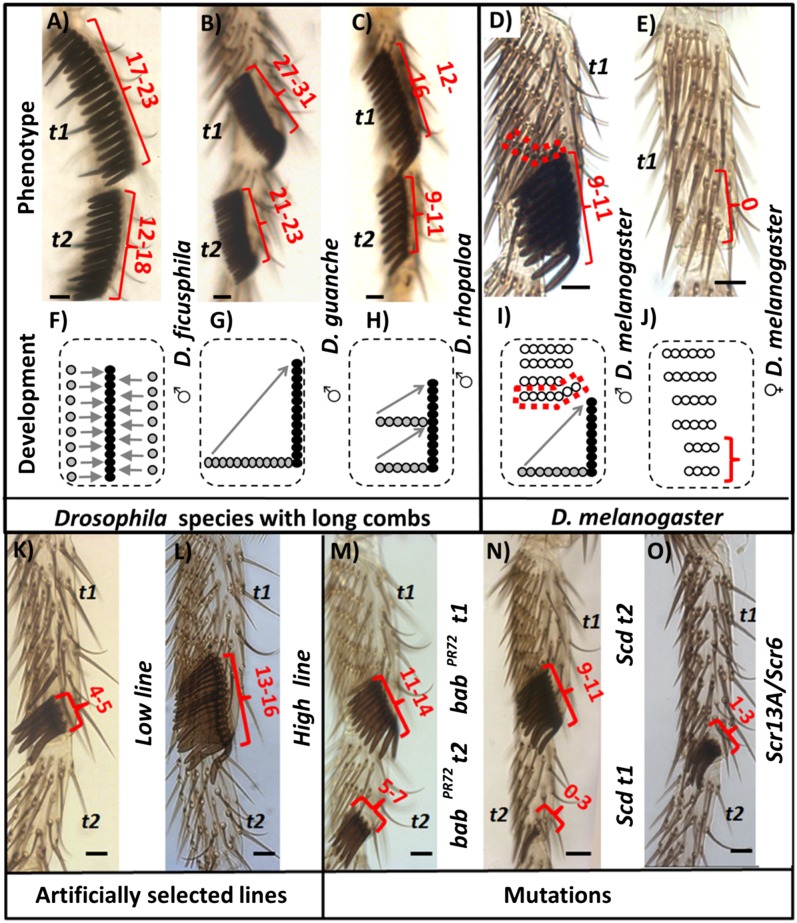Fig. 1.
Variation in sex comb tooth number and development. (A–C) Examples of Drosophilidae forelegs with long combs. (D and E) D. melanogaster forelegs. (F–J) Schematics of foreleg development of the top Drosophila legs. (K–O) Examples of D. melanogaster perturbations in sex comb tooth number. (A–C and F–H) Drosophila species with long sex combs achieve vertical orientation by different mechanisms: (i) Teeth initially form in a vertical orientation (F) (e.g., D. ficusphila t1–t2); (ii) rotation of a long row (G) (e.g., D. guanche t1–t2 and D. rhopaloa t1); (iii) rotation of multiple small rows and posterior fusion into a long sex comb (H) (e.g., D. rhopaloa t2). (D, E, I, and J) In D. melanogaster, the male sex comb rotates from a horizontal to a vertical position (diagrammed in D), while TRs remain horizontal. The only exception is the most distal transverse row (red dotted box in D and I), which bends proximally close to the top part of the sex comb. In contrast, the female rows of bristles homologous to the sex comb remain static during development (brackets in E and J). In order to study the phenotypic and developmental effect of changing the number of sex comb teeth, this trait was perturbed using artificial selection (K and L), mutants (M–O), and UAS-Scr RNAi transgenic lines (Materials and Methods). Gray circles represent sex comb teeth in the initial position and black circles represent sex comb teeth in the final position. Empty circles represent the TR bristles. Gray arrows indicate movement of individual tooth or sex comb rows. Red brackets indicate sex combs or homologous female bristles. Red numbers represent the range of sex comb teeth in each line. babPR72, bric à bracPR72; scd, sex combs distal; Scr, sex combs reduced; t1 and t2, first and second tarsal segment, respectively. Distal is down and posterior is to the right. Scale bar: 20 µm.

